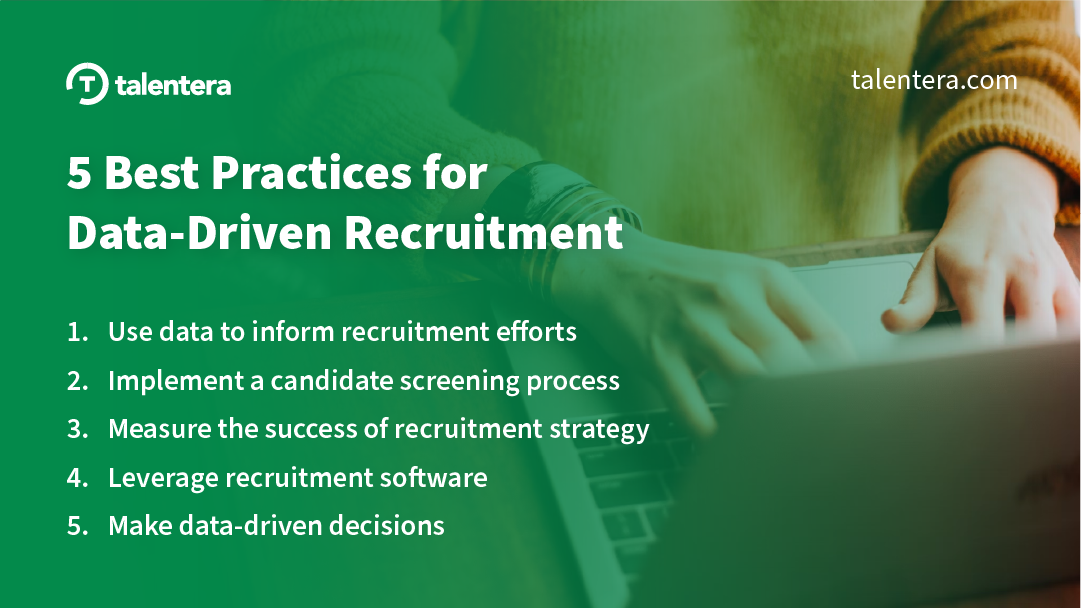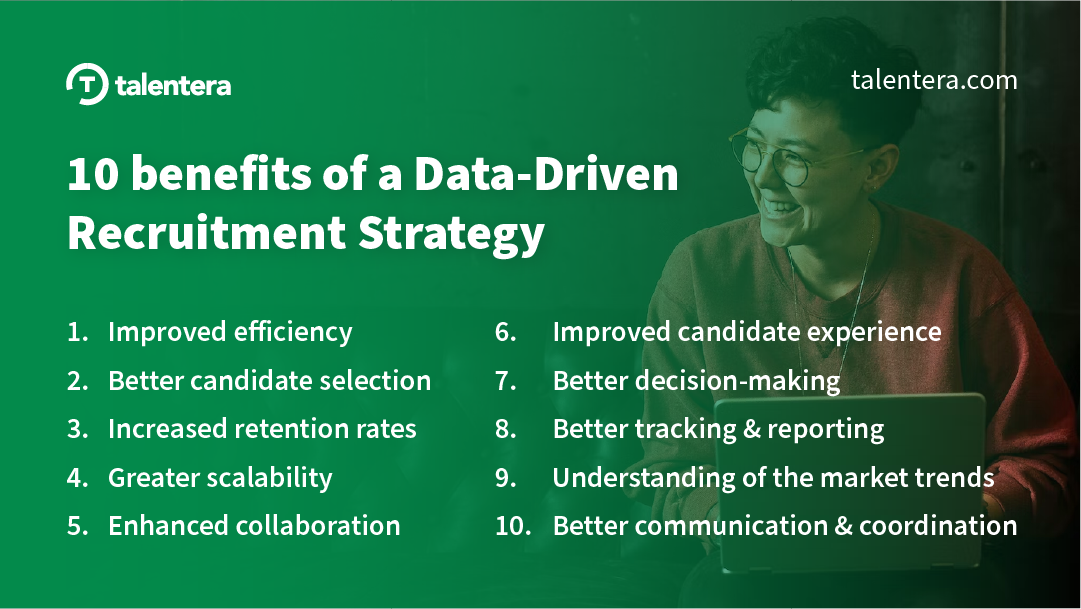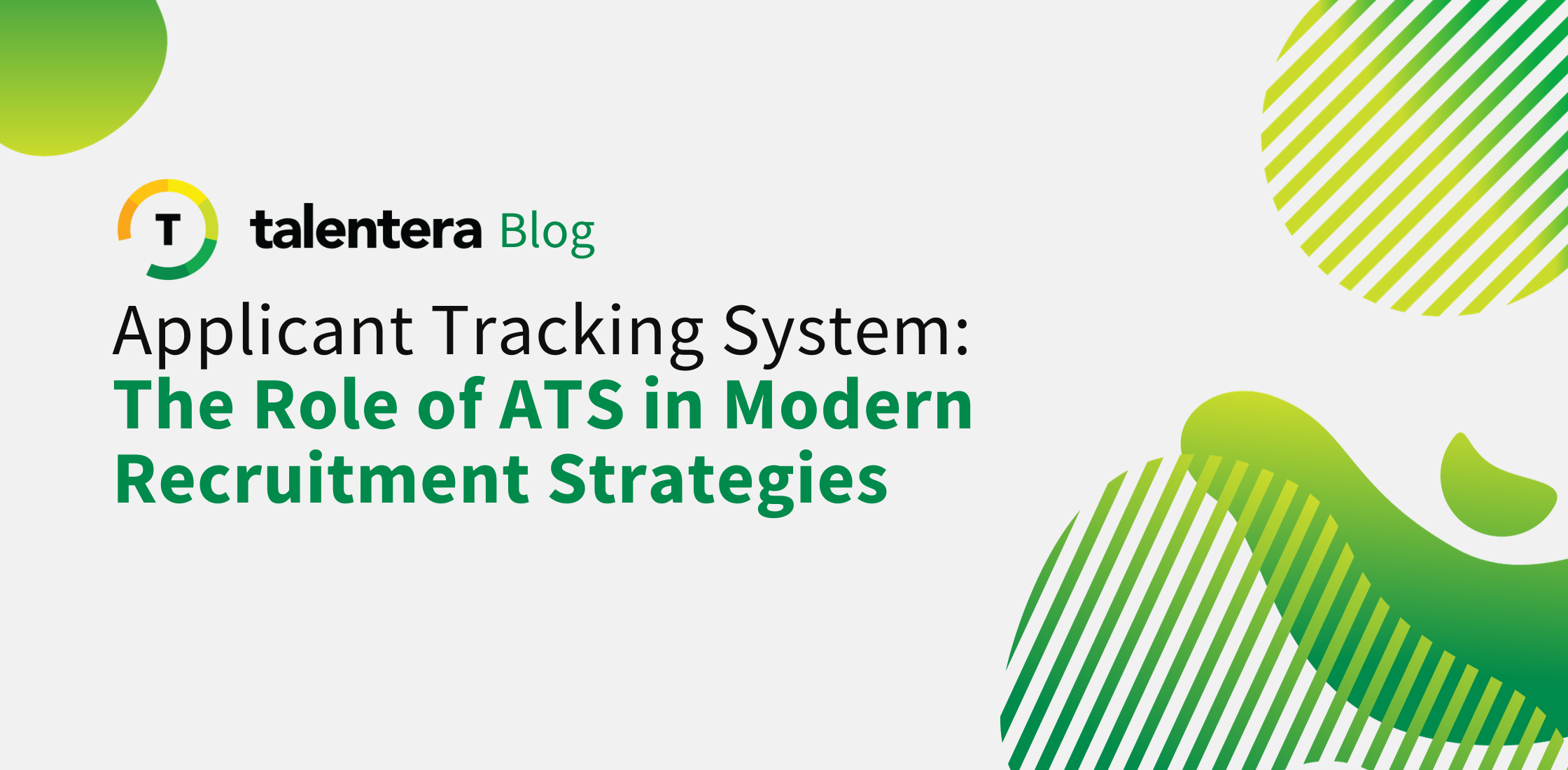
In today’s highly competitive job market, having a strong recruitment strategy is crucial for any organization looking to attract and retain top talent. One of the most effective ways to achieve recruiting success is by implementing a data-driven recruitment strategy. In this article, we’ll explore the key benefits of using data to inform your hiring decisions and provide a practical guide for putting a data-driven hiring plan into action.

5 best practices for data-driven recruitment
- Use data to inform your recruitment efforts: By analyzing data on job boards, candidate tracking, and social media job postings, you can identify the most effective channels for reaching and attracting top talent.
- Implement a candidate screening process: By using data to screen candidates, you can ensure that you’re only considering the most qualified and suitable applicants.
- Track and measure the success of your recruitment strategy: By tracking key metrics such as time-to-hire and cost-per-hire, you can identify areas for improvement and make data-driven decisions to optimize your recruitment efforts.
- Leverage recruitment software: By using recruitment software, you can automate many of the data-driven processes involved in recruiting, such as candidate screening, tracking, and reporting.
- Make data-driven decisions: When making hiring decisions, rely on data and analysis rather than intuition or gut feeling.
Being the industry leaders in recruitment Saas, Talentera provides market-best technologies to make hiring as simple as possible.

10 benefits of a data-driven recruitment strategy
- Improved efficiency: By using data to inform your recruitment efforts, you can target your recruiting activities more effectively and reduce the time and cost required to hire new employees.
- Better candidate selection: By using data to screen candidates, you can ensure that you’re only considering the most qualified and suitable applicants for the job.
- Increased retention rates: By using data to understand what factors lead to high employee retention, you can make data-driven decisions to improve your retention rates.
- Greater scalability: By using data to track and measure the success of your recruitment strategy, you can identify areas for improvement and make data-driven decisions to optimize your recruitment efforts.
- Enhanced collaboration: By using recruitment software, you can automate many of the data-driven processes involved in recruiting and share data with other teams such as HR, allowing for better collaboration and communication.
- Improved candidate experience: By using data to understand the candidate journey, you can identify areas of improvement and make data-driven decisions to enhance the candidate experience.
- Better decision-making: By making data-driven decisions, you can rely on data and analysis rather than intuition or gut feeling.
- Better tracking and reporting: By using data to track and measure the success of your recruitment strategy, you can generate reports and share the insights with your team.
- Improved understanding of the market trends: By analyzing job boards, candidate tracking, and social media job postings, you can identify the most effective channels for reaching and attracting top talent.
- Better communication and coordination: By using recruitment software, you can automate many of the data-driven processes involved in recruiting, such as candidate screening, tracking, and reporting, leading to better communication and coordination among recruiters and hiring managers.
The most important data metrics for hiring
When it comes to data-driven recruitment, tracking the right metrics is crucial for making informed hiring decisions. Here are a few of the most important data metrics for hiring:
Before we jump into highlighting important data metrics for hiring, Talentera provides world-class data analysis tools to help recruiters make informed decisions. Check out our products here:
- Time-to-hire: This metric measures the amount of time it takes for a job to be filled, from the posting of the job to the acceptance of an offer. Tracking this metric can help you identify areas of your recruitment process that may be slowing down the hiring process.
- Cost-per-hire: This metric measures the total cost of filling a job opening, including recruitment advertising, agency fees, and internal recruitment costs. Tracking this metric can help you identify areas where you may be able to reduce costs.
- Applicant-to-hire ratio: This metric measures the number of applicants received for a job opening compared to the number of hires made. Tracking this metric can help you identify areas of your recruitment process that may be leading to a high number of unqualified applicants.
- Retention rate: This metric measures the percentage of employees who remain with the organization for a certain period of time. Tracking this metric can help you identify areas of your recruitment process that may be leading to high turnover rates.
- Employee satisfaction: This metric measures how satisfied employees are with their job and the organization. Tracking this metric can help you identify areas of your recruitment process that may be leading to a high number of unqualified applicants and high turnover rates.
- Source of Hire: Tracking the source of hire is very important in understanding and optimizing your recruitment funnel. It is important to allocate maximum resources to a channel that has the best conversion rates.
By tracking these metrics, you can gain valuable insights into your recruitment process and make data-driven decisions that can help you achieve your hiring goals.
In conclusion, a data-driven recruitment strategy is an effective way to achieve hiring success. By using data to inform your recruitment efforts, you can target your recruiting activities more effectively, select the right candidates, and improve your retention rates. Additionally, recruitment software can automate many of the data-driven processes involved in recruiting, leading to improved collaboration and communication among recruiters and hiring managers.






